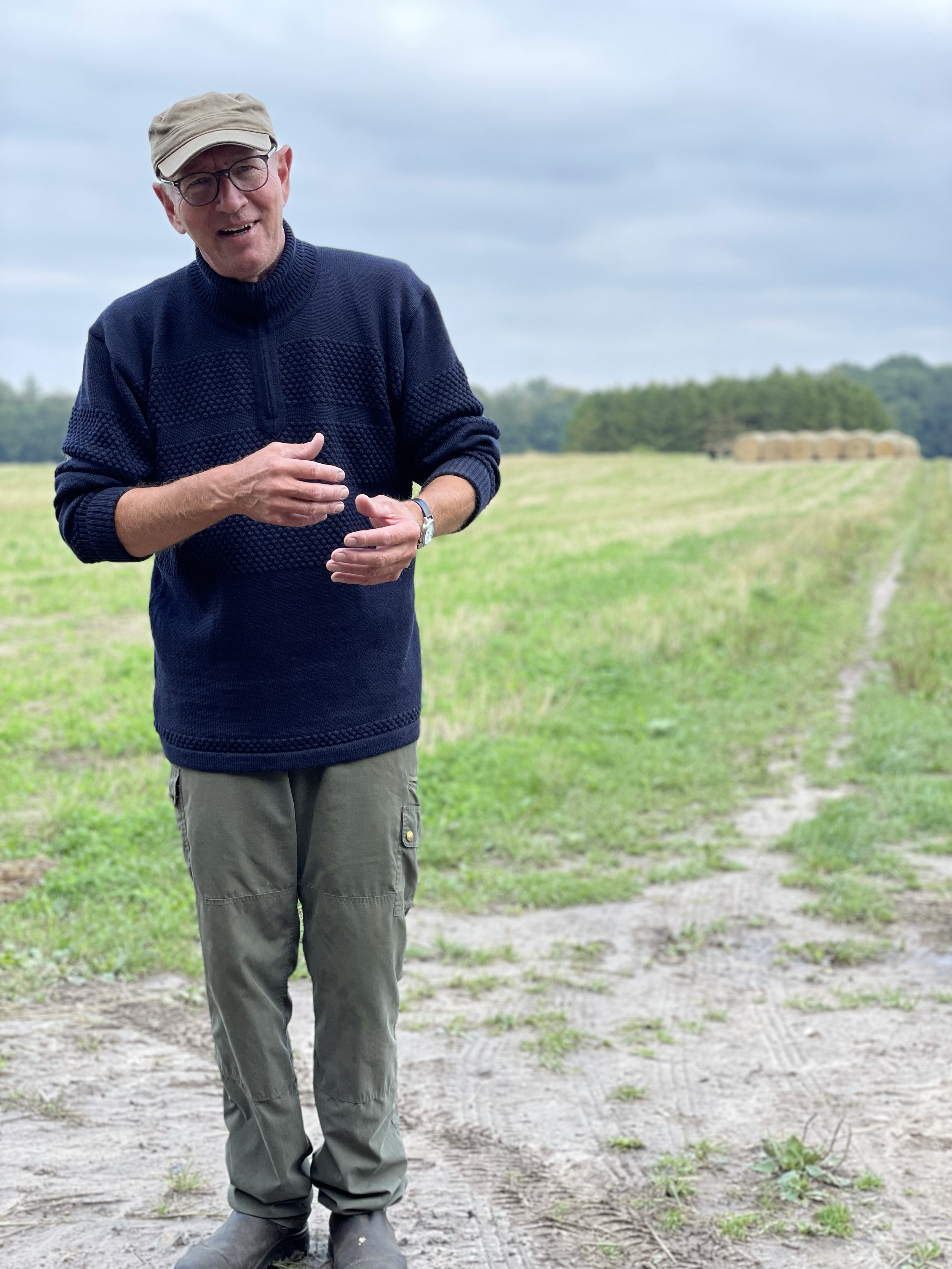Going Full Circle: Why you should swap pubs for muddy shoes and amazing food on a Farm Crawl to your local producers
Why is it so seldom to enjoy a meal made from ingredients grown locally, by farmers you know? This question is the foundation of Foodwise – an initiative by Edith Welker who wants to connect people to small farms through farm trips, farmer-chef matchmaking and much more.
In the late summer, Foodwise embarked on the first Full Circle Farm Crawl with a group of curious guests, visiting some of the best local farms on the outskirts of Copenhagen. Join Edith as she recounts the tasty and insightful journey through everything from holistic agriculture, animal welfare and biodiversity to social work and some of the best food the land has to offer.
Tekst af Edith Welker, Food Wise. Fotos af Molly Grønberg og Marie Sainabou Jeng
Who makes the food we eat? How much work goes into it, and how much money should we pay for it? And what do terms like circular economy, biodiversity and holistic agriculture actually mean for a farmer, for the land and for our food?
There are many questions about the food we eat, and it can be hard to find the answers in a modern food system, where we are so far removed from our food sources. I’m Edith Welker (pictured left), the founder of FoodWise, where I work to connect ordinary citizens in Copenhagen to hard-working local farmers in the Danish countryside.
In August of this year, as part of the Madland Festival, Foodwise hosted the Full Circle Farm Crawl – an experiment to see what happens when city folks and small-scale farmers are put together in a field, and at a table, with no script except the farmers’ own experience, and their answers to challenging questions. Not a fancy farm dinner, but an opportunity for folks to see, hear, taste, and begin to truly understand the difference between what you get from a local farmer’s field, and what you might otherwise get from the supermarket.
The idea behind the Farm Crawl was simple: visit three remarkable farms, and hope that the experience can educate guests on where our food comes from, what it takes to produce it, the value of getting it locally and knowing the people behind it – and in so doing, guide more people towards supporting local farmers in the future.
The project was dubbed “Full Circle,” because most of the producers and makers visited work together in a circular economy: Østagergård (it’s founder Carsten in the picture) grows biodynamic barley, which becomes terroir beer at Herslev Bryghus, and finally, the spent grain is used as a nutritious feed for the pigs at Birthesminde, and the for cattle back at Østagergård.
The bus first rolled up to Copenhagen Goat Milk, where we were greeted by Claus, Summer, and Lulu the dog. Although perhaps somewhat outside the day’s theme of circularity, Copenhagen Goat Milk exemplifies the astounding ingenuity, risk-taking, and diversity of the sustainable farming movement in Denmark. It’s hard to wrap one’s head around how a single family could raise animals holistically, transform their products into tasty food, and market everything directly to the public, all while continuously teaching themselves new techniques. But that is the story of Copenhagen Goat Milk, and many other small farmers in Denmark.
This reality speaks volumes about how the prices we pay for food are often completely out of touch with the work it takes to produce it. We need to appreciate and support the work of people who make our food by paying them a fair price – otherwise we contribute to the continued demand for speed and quantity over care and quality that has been so harmful to our land, climate and nutrition for decades.
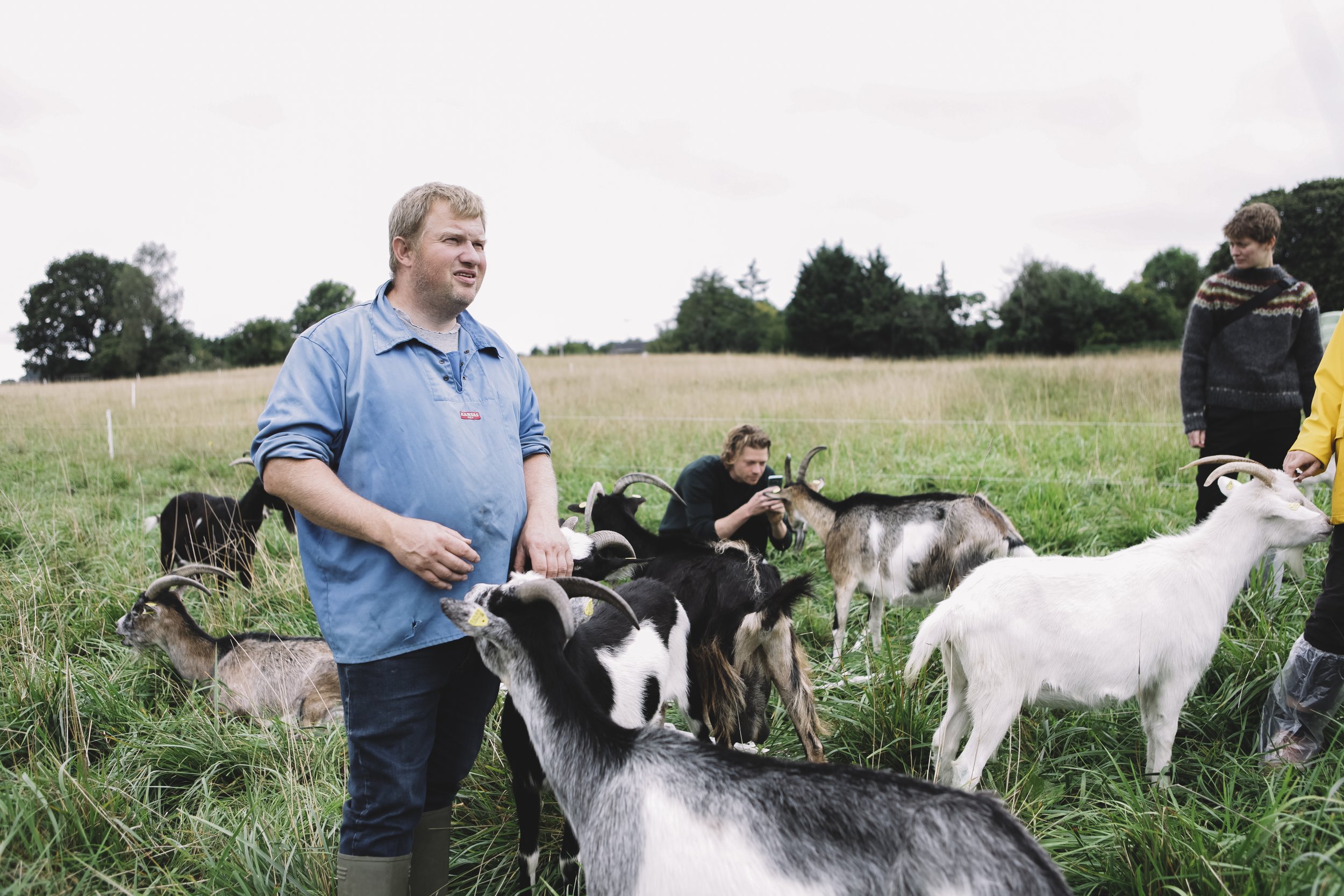
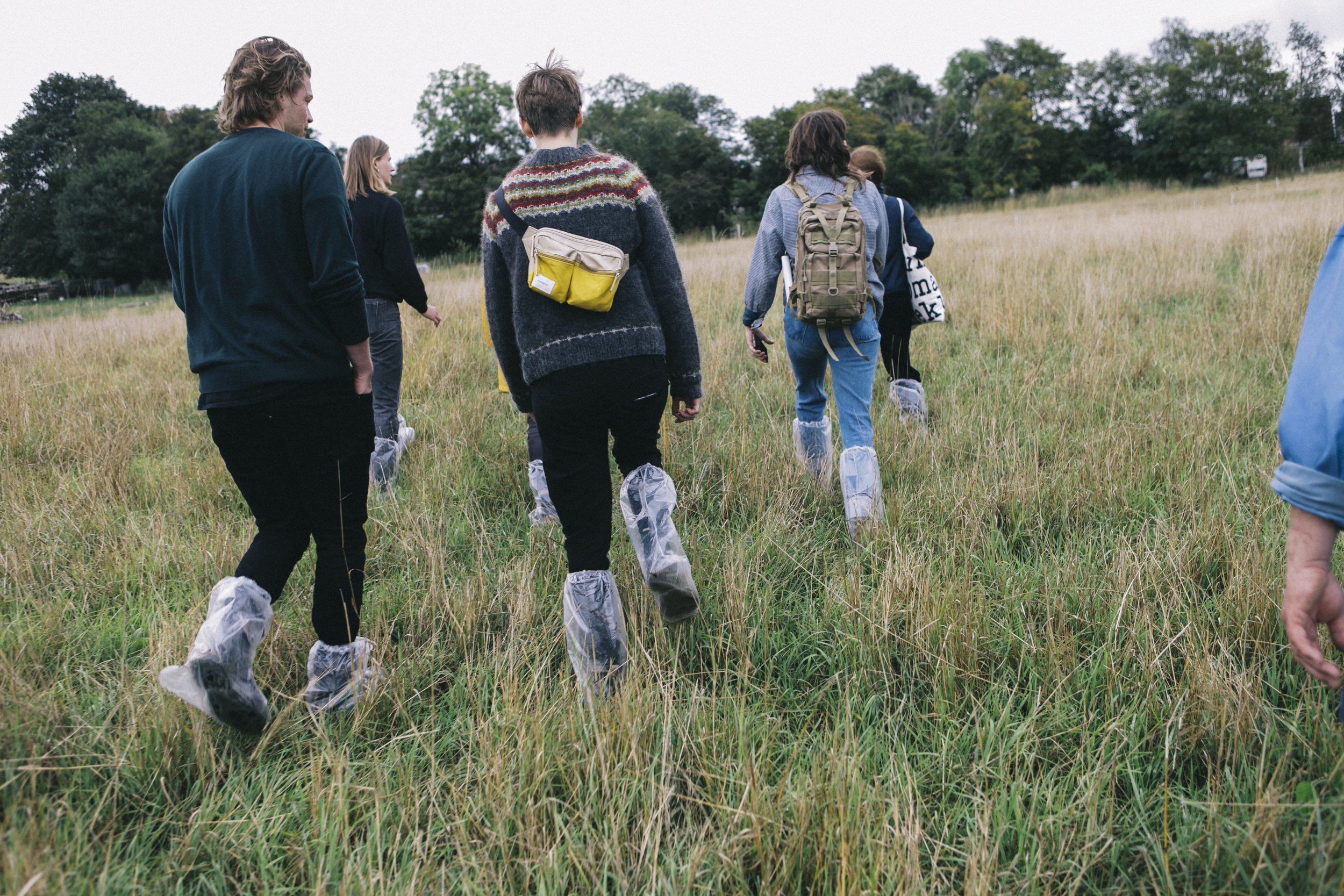
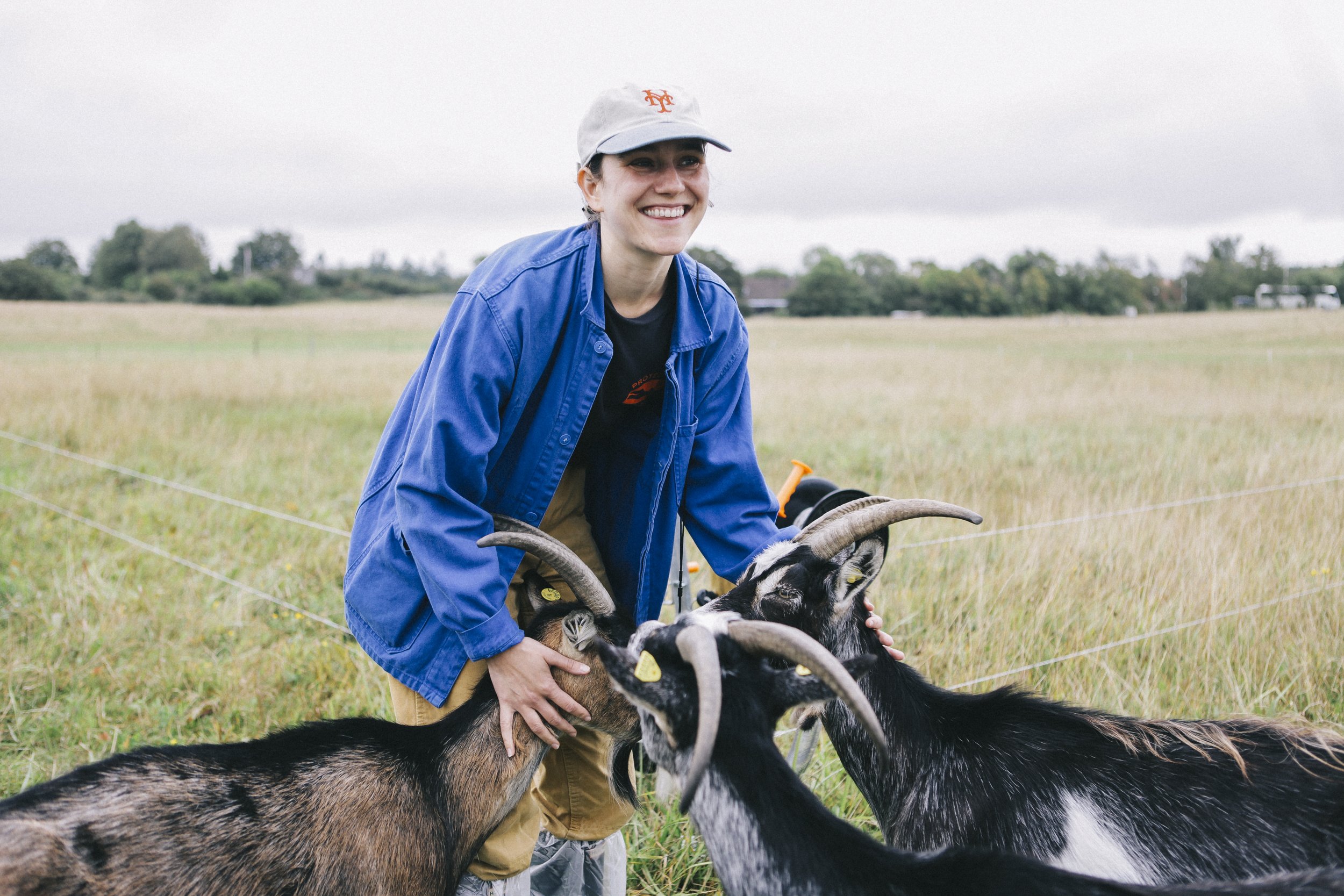
Claus (to the left) tends the goats – and the grass – at Copenhagen Goat Milk, according to the principles of holistic grazing. Rather than grazing the animals on a broad patch of seeded pasture for several days, Claus is always busy moving fences, and shifting his herd of 200 Danish Landrace goats between smaller tracts, with naturally occurring grasses, and very high biodiversity. He does this not only because he is admittedly “obsessed with grass,” but because this pasture ecosystem feeds the goats well, retains water in times of drought, and, recent studies suggest, actually stores carbon, rather than acting as a net emitter of greenhouse gases, as with conventional pasture management.
Summer is the cheesemaker at Copenhagen Goat Milk. Even this simple fact is remarkable to me, because as a Cambodian-Thai immigrant, goat cheese was, at one time, an extremely exotic food to her. However she has made herself into a master, making the most wonderful cheeses, and sharing them with love and excitement.
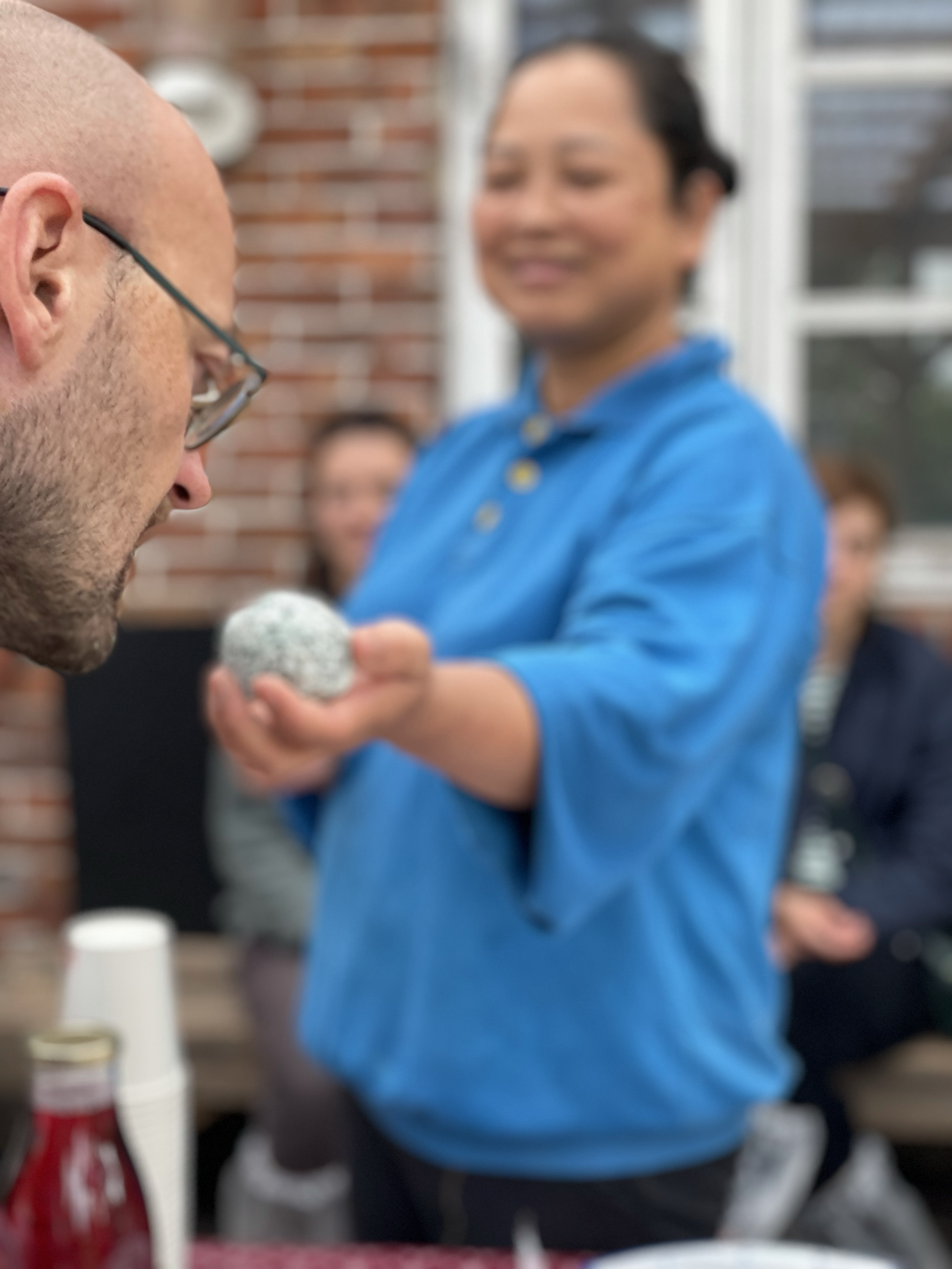
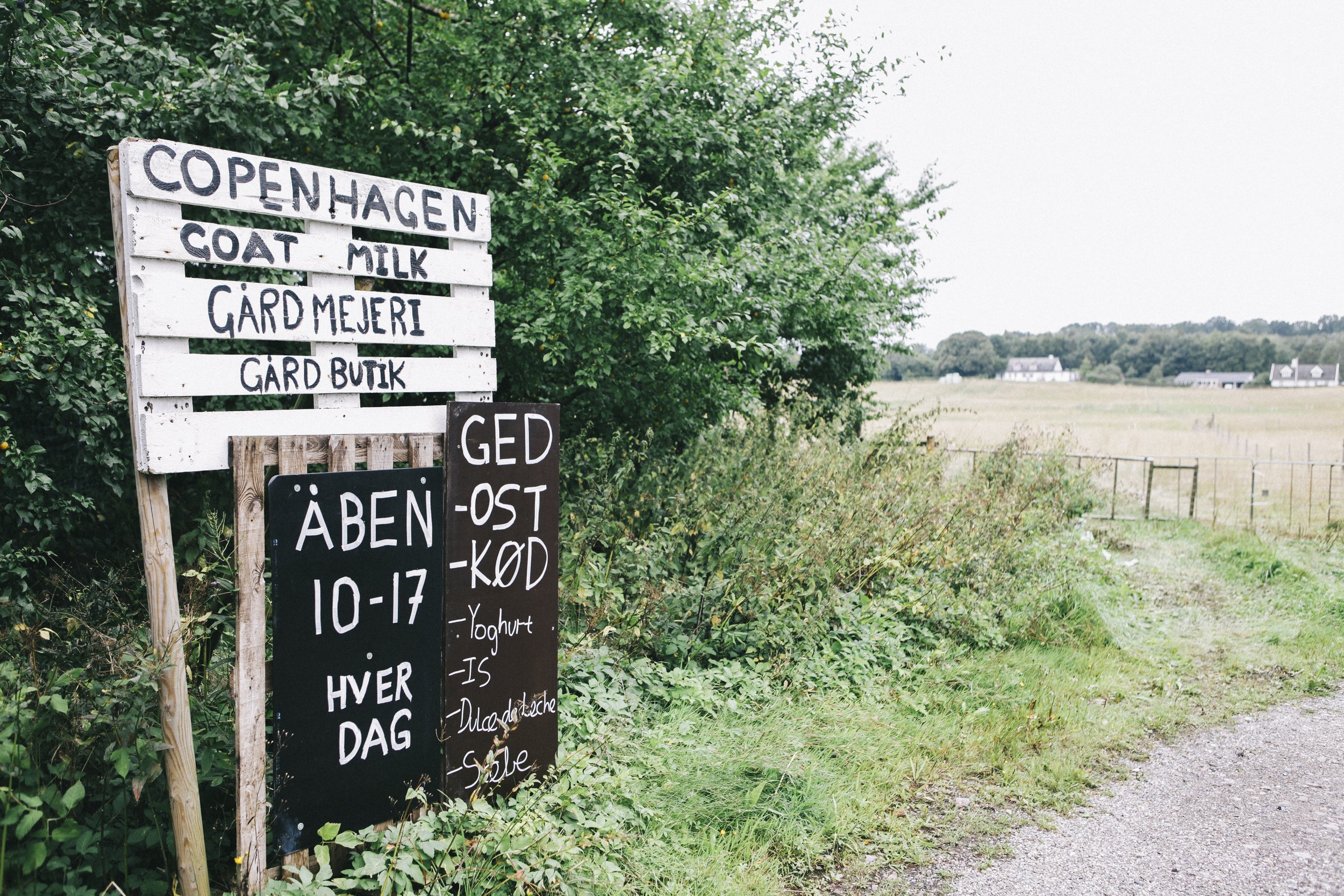
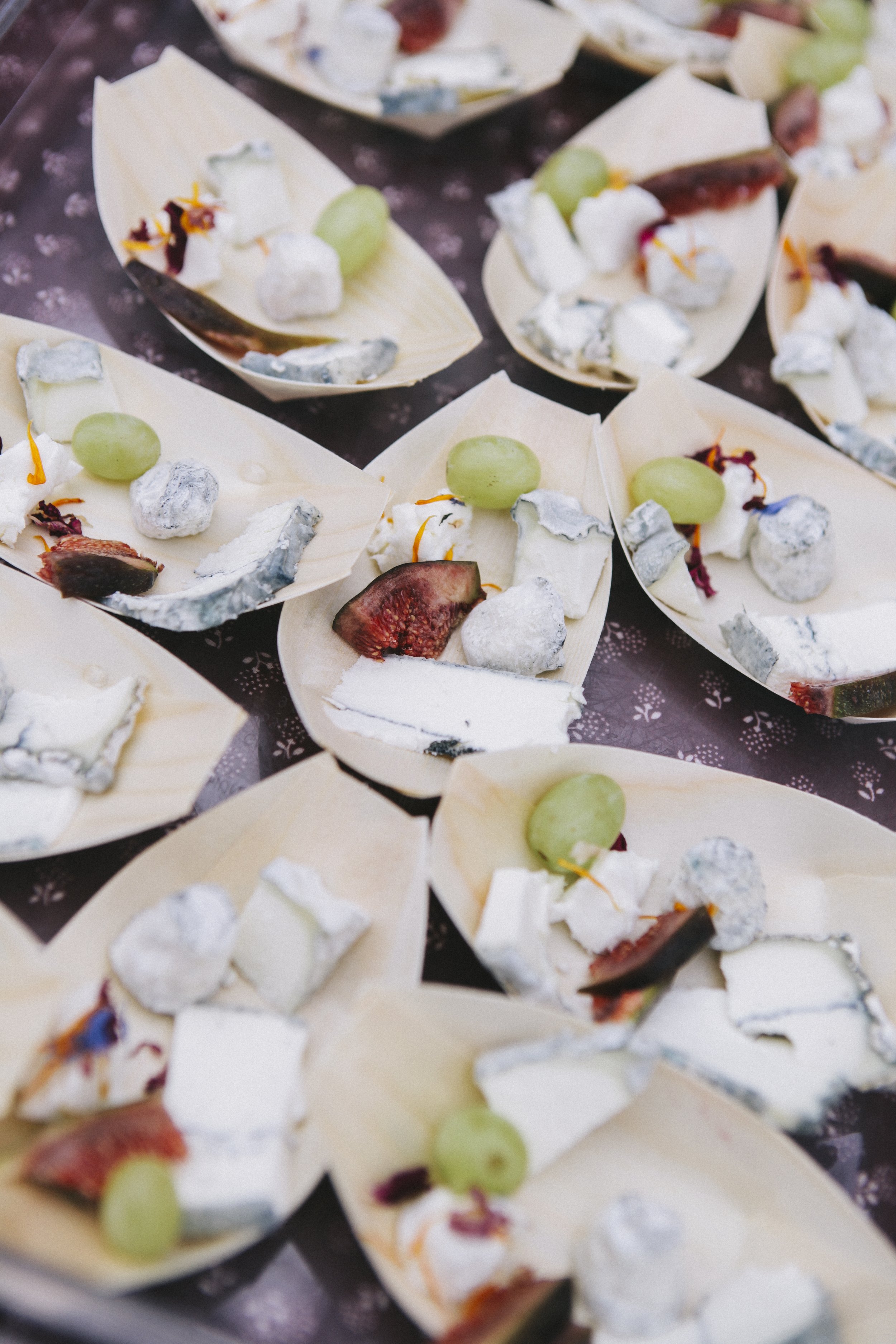
Generous as ever, Summer shared with us her fresh cheese, bleu cheese, aged “forest floor” cheese, yogurt, ice cream, and even caramel made from goat’s milk. Do yourself a favor and pick up some Copenhagen Goat Milk cheese at Omegn og Venner, Gourmand Ostespecialisten, or Grøntmarked if you’re in Copenhagen – or visit their farm shop in Jystrup.
The second stop of the day was to Østagergård, where before touring their mill and pastures, we ate what I might call a perfect meal, made by chef Alex from the restaurant Friheden in Copenhagen. A simple meal of fresh cheese from Copenhagen Goat Milk, local tomatoes from Lille Have, purple wheat berries from Østagergård, as well as herbs from their greenhouse.
Everything but the olive oil and lemon came directly from a small Danish farm, and for this reason it was every bit as thought-provoking as it was delicious, because for me it begs the question: Why is it so seldom to enjoy a meal made from ingredients grown locally, by farmers you know? I constantly ask myself this question, especially since moving to Denmark, which is so agriculturally rich, culinarily inclined, and at the forefront of sustainable food system transitions.
The answer is of course complex, and I hope this trip, and this meal, planted the same question in the minds of guests, while simultaneously pointing them towards a few farms they could support.
While lunch was coming together, Marianne, who works at the mill, introduced a couple of the wheat varieties grown at Østagergård. In her hand are spelt and swidden rye, two ancient grains. In addition to these, they grow Øland’s wheat, barley, yellow field peas, an Indian ancient wheat called “Kuglehvede”, and guests’ favorite, purple wheat. Each of these varieties represent a tradeoff: lower yields in favor of higher agrobiodiversity and better nutrition and flavor. If you live in Copenhagen, be sure to pick up a bag of their remarkable flour at Irma.
When asked about the difference between biodynamic farming and other methods, Carsten, Østagergårds founder, surprised us by saying, “in my experience, biodynamic farmers are much happier.” This perfectly captures the wholeness of the philosophy behind Østagergård’s work.
The folks at Østagergård farm with the root intention to “take care of the humans that are part of this place,” in addition to the soil, plants, and animals there. Østagergård offers living, education and work to around 75 people with reduced mental and social skills. It is first a haven for people in need of community and purpose, and second a commercial farm, producing primarily cereals, and occasionally beef, according to the balanced farm ecosystem, and the health of the herd. They grow their heirloom grains biodynamically with the help of happy cows raised on abundant natural pastures. Pictured above is Michael, a student and resident at Østagergård, explaining the milling process to us.
Maria and Kent of Birthesminde welcomed us for an evening tour of their hog farm, and a barbecue dinner to wrap up the Full Circle Farm Crawl. Maria and Kent raise, market, and just started butchering and curing their own “slow pigs” – a mixed bunch of black-spotted Danish Landrace, and Mangalitza ‘wool’ pigs. If I had my way, Maria would write the rules for everyone about how to raise pigs, because their operation takes animal welfare, agroecology, climate change, and tastiness all into consideration.
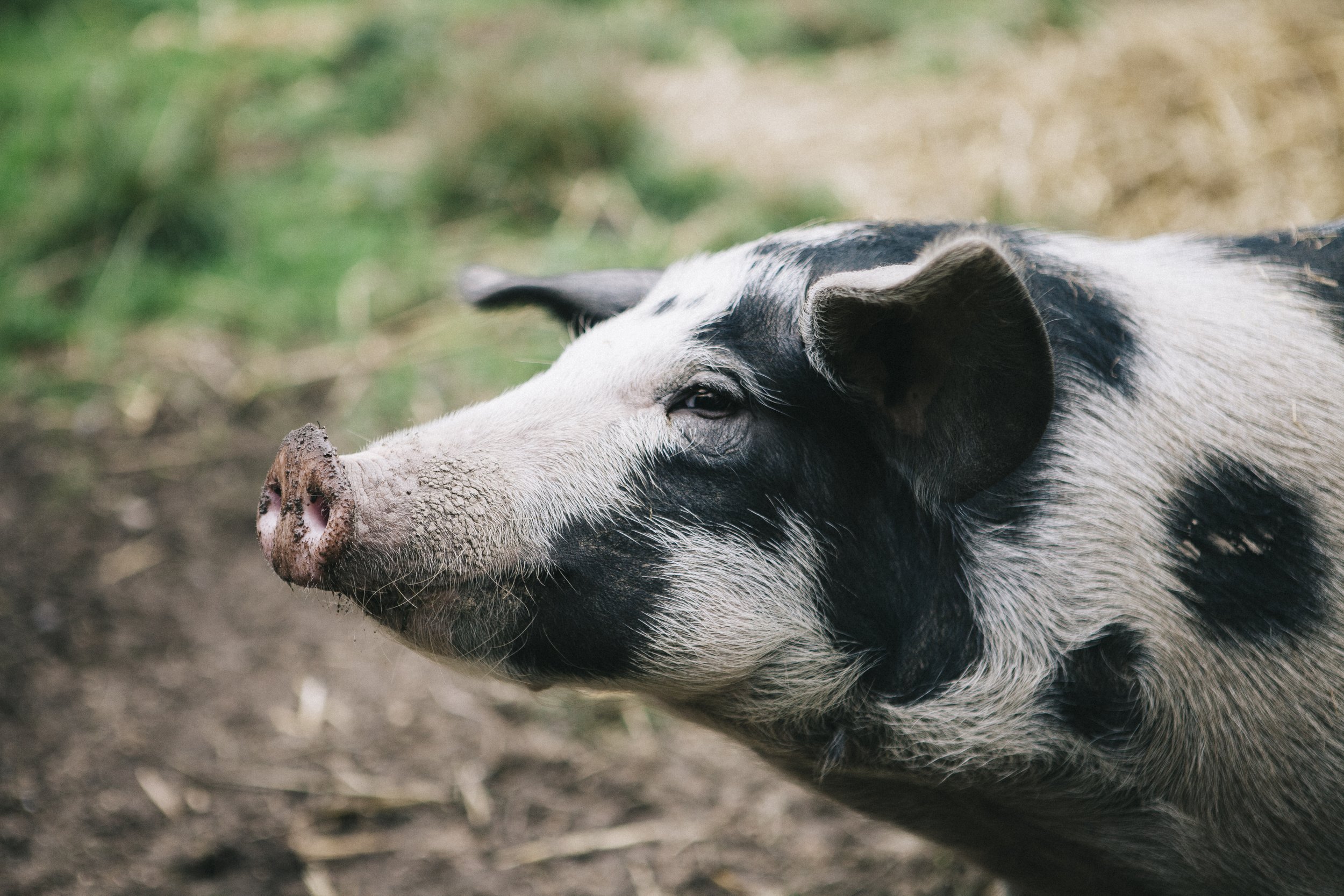
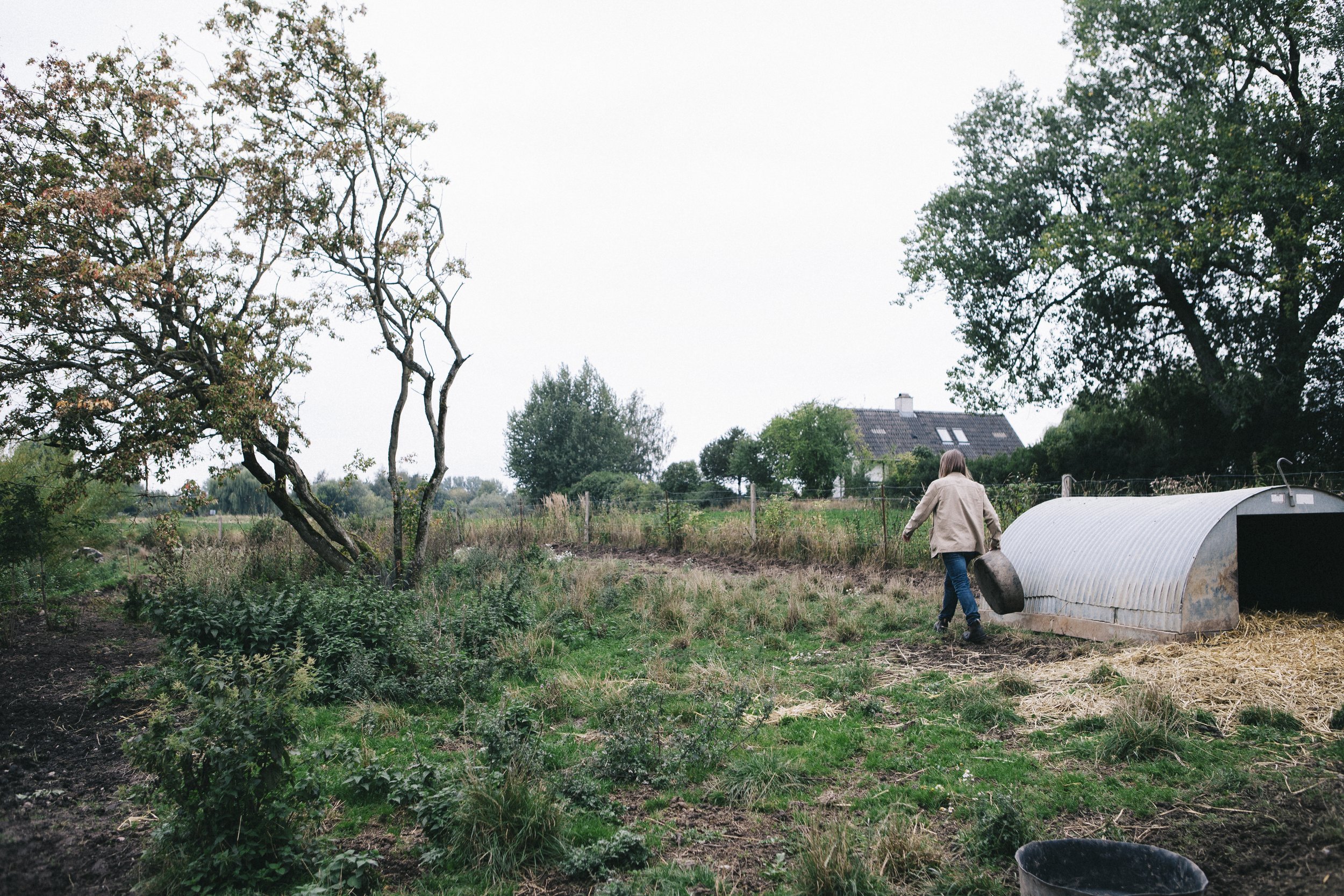
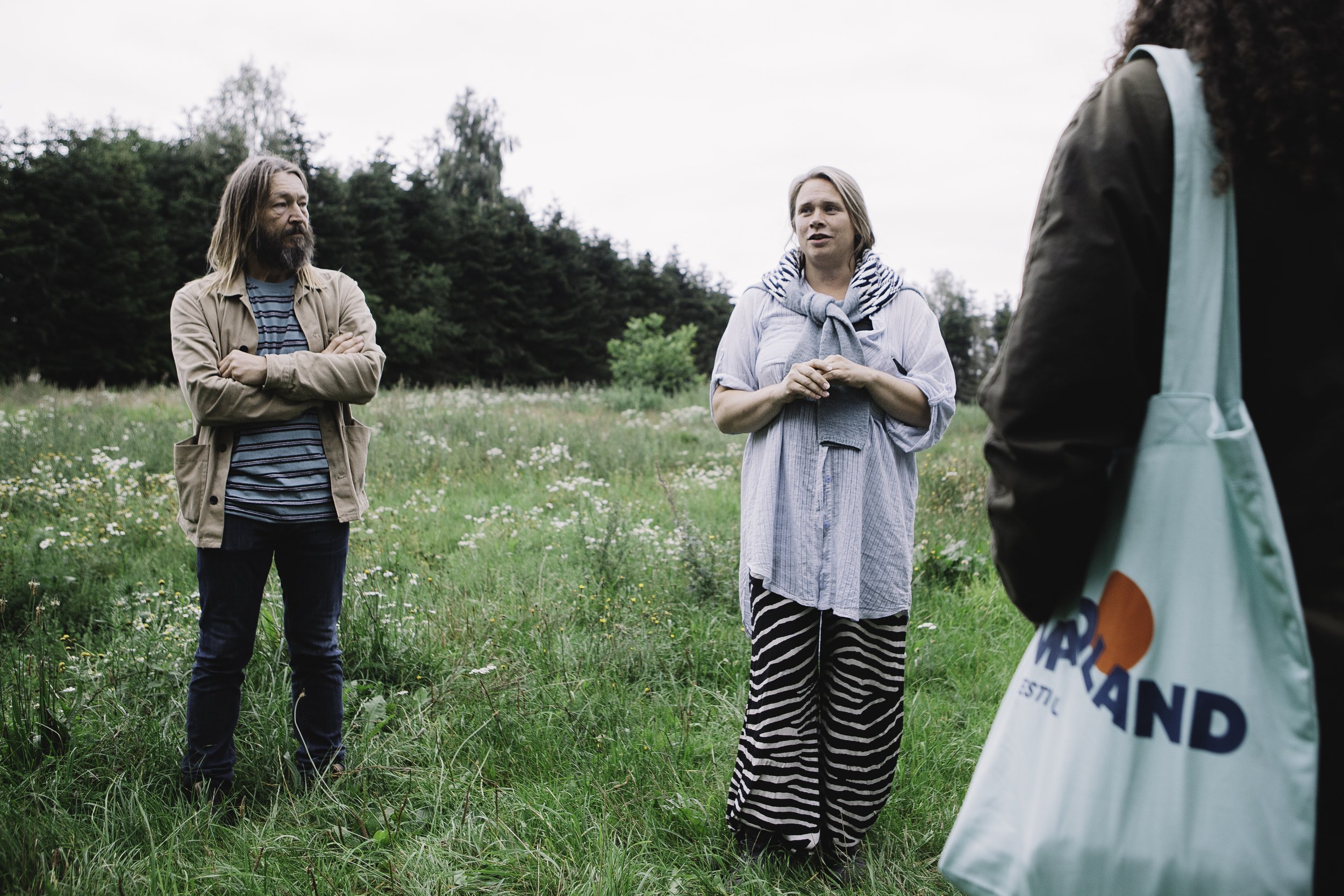
Pigs at Birthesminde live twice as long as conventionally-raised ones, and spend their days roaming free in the fields and forests of the property, with a view of Roskilde Fjord, their tails intact, and a rich diet of spent grains from Herslev Bryghus. It takes more land, more time and more care to produce meat this way, if we only ate pork from farms like Birthesminde, we’d certainly eat less of it, but in my opinion, the smaller quantity would be more than made up for in quality, flavor, peace of mind, and a much healthier landscape than we get from industrial agriculture.
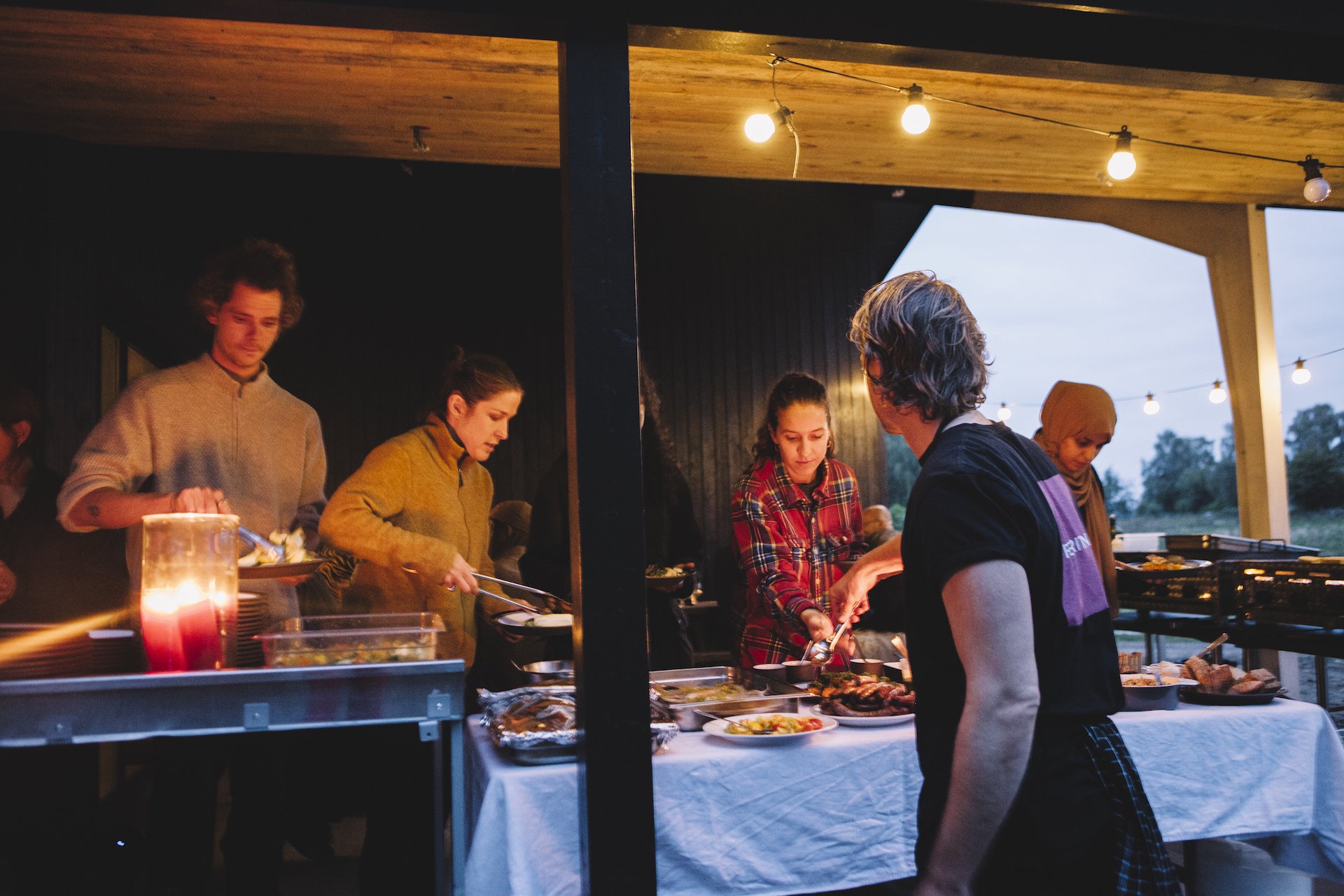
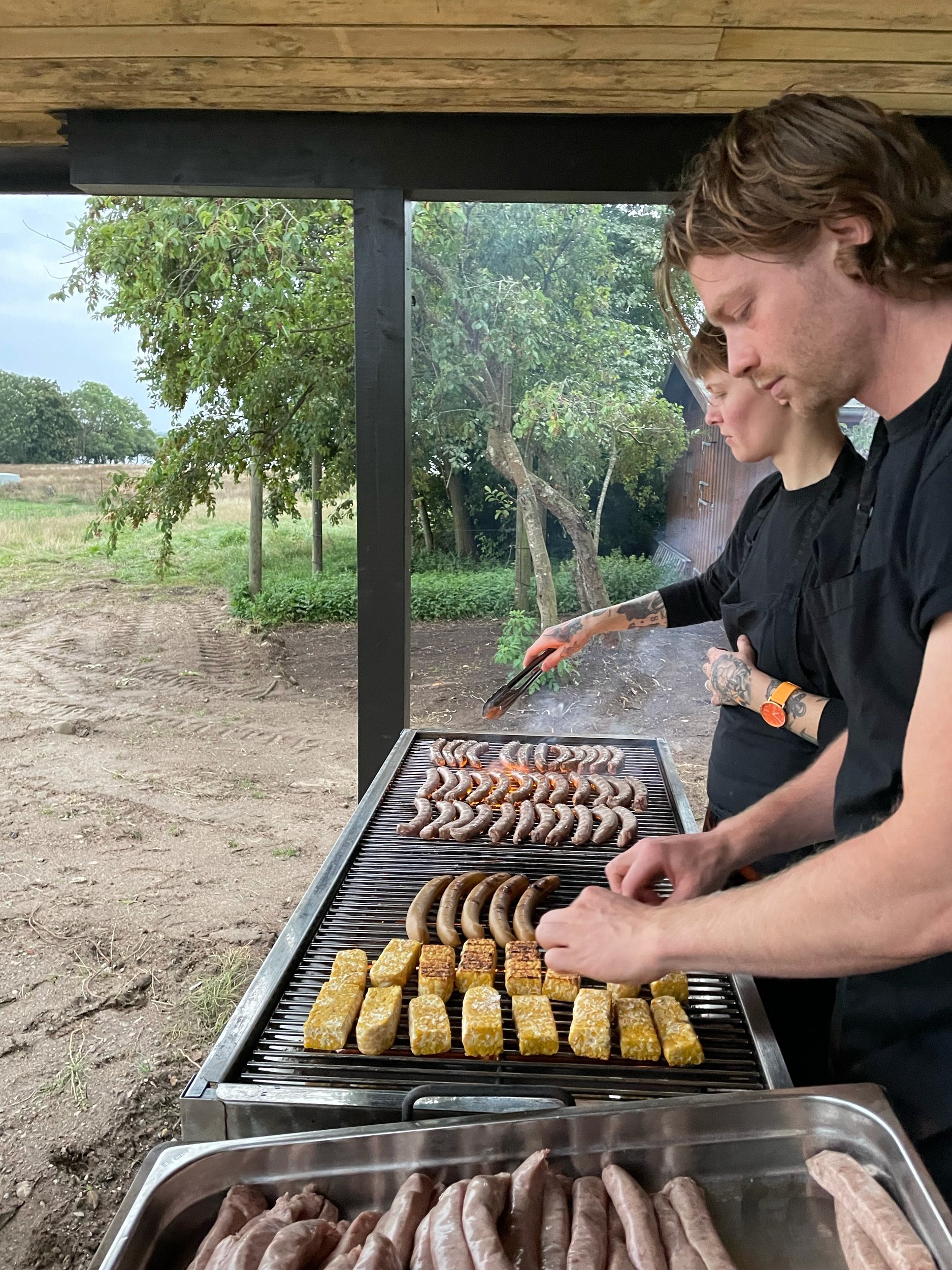
Nowadays, Birthesminde is more accessible to the public than ever before, with doorstep delivery to Copenhagen on Fridays, and a beautiful new café space where guests can see and taste the love they put into their work. We had the enormous pleasure of soft-opening the space with our Farm Crawl barbecue dinner.
Copenhagen Goat Milk, Østagergård, and Birthesminde make farming look hard, but also valiant. And It’s my hope that those who joined the Full Circle Farm Crawl better understand their work, are sharing stories from this day with their friends, and continue to support crazy-hardworking and altruistic smallholder farmers like them when they can.
We saw three very different but equally good versions of farming on what we hope will be the first of many Full Circle Farm Crawls. There are still many, many more examples to learn from – or to put it another way, many more opportunities for us to find connection and meaning in everyday life through the food we eat.


